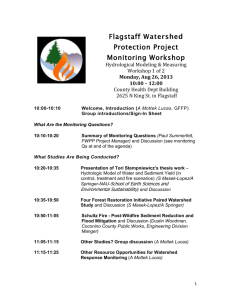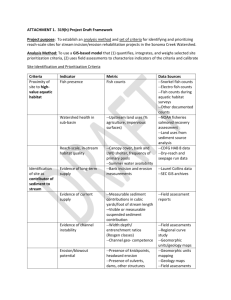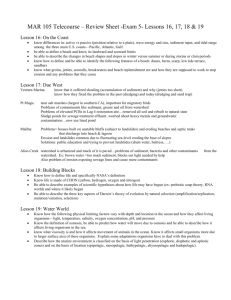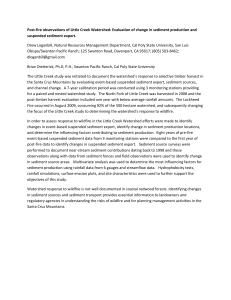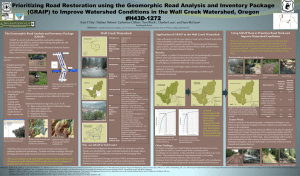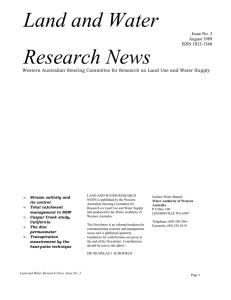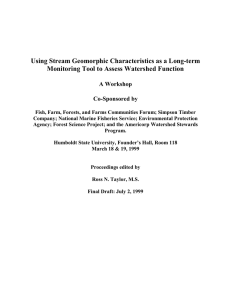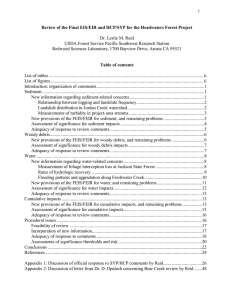Water Quality Trading - Point Source for Non
advertisement
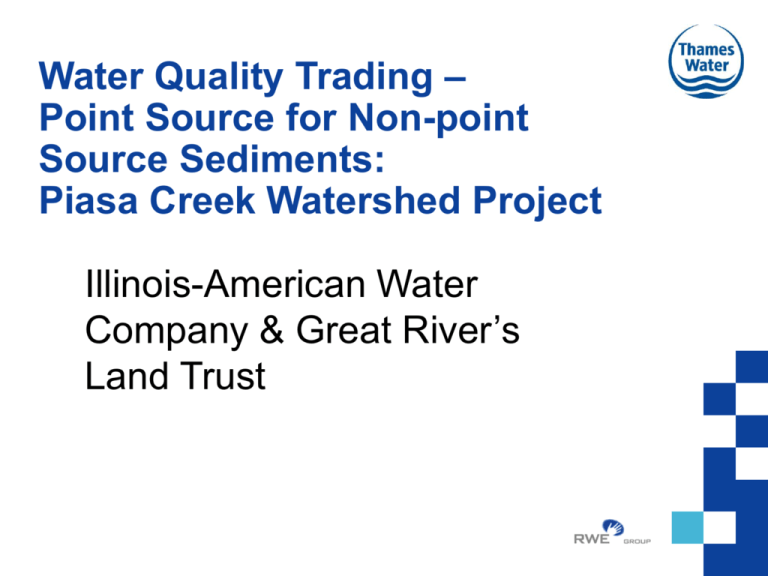
Water Quality Trading – Point Source for Non-point Source Sediments: Piasa Creek Watershed Project Illinois-American Water Company & Great River’s Land Trust Legend of the Piasa Bird Location of Alton IL Great River Road Scenic Highway “Old” Alton Water Treatment Facility “Wet” Alton Water Treatment Facility “New” Alton Water Treatment Facility The Challenge Old facility – Site specific exemption – Non-standard NPDES permit – Direct discharge allowed – Exempt from TSS and total iron effluent standards New facility – “Old” regulatory relief does not apply – Must apply for/justify new relief The Regulators IL Pollution Control Board (IPCB) – Writes environmental law – Arbitrates contested issues IL EPA – Administers/enforces environmental law – Writes/issues NPDES permit – Cannot write a permit that IL law does not allow for The Stakeholders Owner, Illinois-American Water Company Regulators, IEPA, IPCB Local Interest Groups (economic, aesthetic) Environmental groups (local, state, national) Customers The Study (SSIS) Site Specific Impact Study ENSR environmental engineers Consider all regulatory tests (BPJ,BPT, BCT) Compare residual management control technologies Two Alternatives – Lagoons, dewatering, landfilling – Direct discharge The comparison Lagoon & Landfill – $7.4 million capital costs, $0.42 million annual O&M – Avg 4 trucks/day on Scenic Route 3 – 8,800 yd3/yr of landfill space – Local Opposition Direct Discharge –No water quality impacts –No landfill depletion –No aesthetic impacts on area –No cost –No brainer (?) The Impacts SSIS findings: – TSS impact insignificant – 91% of solids originate from river – Metals nil (note reliance on PAS) – No harm to aquatic life – No unnatural buildup – Mussel survey no problems IEPA – nope! The Solution Partnership with Great Rivers Land Trust (GRLT) – Piasa Creek Watershed Plan – Sustainable reduction in overall sediment loading to the Mississippi River – IL-AWC contribution of $4.15 million over 10-year period – Minimum 2:1 reduction (6600 ton/year) Regulatory Approval – IEPA, IPCB – Adjusted Standard AS 99-6 written into IL law – Terms of AS 99-6 and contract w/GRLT written into special conditions of NPDES permit Great Rivers Land Trust Local Non-Profit Organization Primary Mission: – Preservation of scenic and ecologically valuable land along the Alton Lake Heritage Corridor, 20,000 acres – Land preservation efforts accomplished through easements and land acquisitions – Goal: 5,000 to 10,000 acres protected in next 10 years Piasa Creek Watershed Plan Primary Objective: – “To enhance and restore the natural non-point source pollutant mitigation functions of the watershed” Piasa Creek Watershed Watershed Major Problem Areas Planning and Regulation Sewage Stormwater Runoff and Erosion – Uncontrolled urbanization – Sediment – Road salts, fertilizers, pesticides – Septic tank effluent – Other pollutants Meeting the Objective Land acquisition and conservation easements Grassed waterways Filter strips Storm water detention basins Terraces Grade control structures Stream bank stabilization Educational programs (communities, schools, landowners) Project Timeline Year 1 (2001): Update 1995 plan, identify potential sediment reduction sites, contact landowners. Years 2-5: Install sediment control structures. Year 6: IEPA review. Years 6-10: Installation of sediment control structures continues. Achieve 2:1 suspended solids reduction. Project Metrics Goal 6600 tons/year sediment reduction Use accepted sediment control practices Sediment savings estimated in partnership with SWCD Revised Universal Soil Loss Equation Resource inventory worksheets for each project Projected year-end 2003: 2613 tons/year Streambank Erosion Streambank Stabilization Storm water basins Erosion control Boy Scout Lake The Benefits Avoid capital and O&M $ for lagooning, landfilling Rate impact on customer reduced No sludge hauling trucks along the Great River Road Save landfill space Reduced net sediment load to the river Precedent/model for other creative beneficial partnerships Questions? Brent Gregory, Director Water Quality Illinois-American Water Company 618-239-3249 bgregory@illinoisamerican.com
